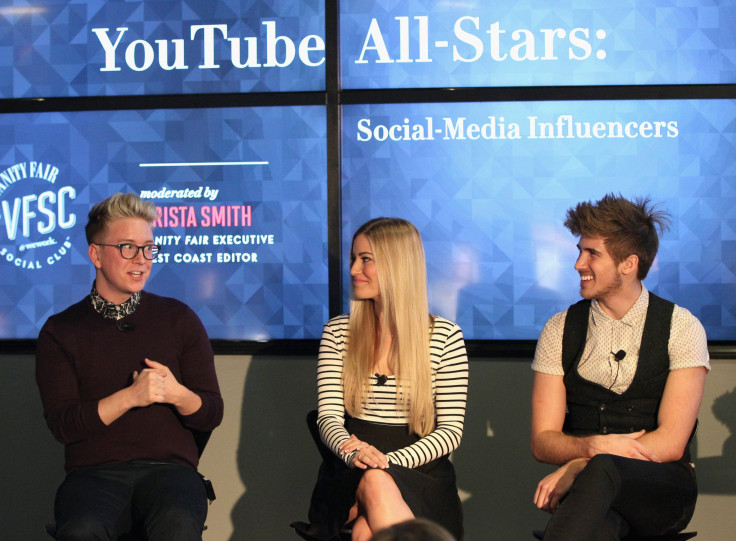Social Media Influencer Marketing: How To Avoid Getting Duped By 'Fakery'

For companies looking to engage with influencers, rampant fraud erodes trust. They want to trust the metrics about followers and fan engagement. But if these numbers are grossly inflated, then brands are naturally hesitant about promotional campaigns.
Instagram and other networks do their best to combat fake followers. They might launch “bot purges” which can reduce the follower count of some big celebrities by millions. Networks have to be careful that they don’t restrict the organic growth of followers, while also preventing fakes. If a smaller influencer gains an appearance on the “Ellen” show, their followers will spike dramatically. If Instagram’s algorithms identify this movement as a bot, the followers will not be pleased.
Despite the efforts of networks, there are still many influencers with inflated numbers who have high follower counts but limited actual reach and engagement. Brands should stay away from promotional campaigns with such influencers because the return on investment just isn’t there. Here are some thoughts on the “fakery” in influencer marketing as well as some tips for small businesses that are eager to find impactful influencers.
Spotting fakes through analytics
Wading through the sea of influencers to determine those with genuine followings and those riddled with fakes is challenging. Many brands that want to dip into influencer marketing are best served by hiring an influencer marketing agency. Top agencies in this market will have rosters of established influencers who have a proven ability to get in front of targeted and revenue-generating fans.
Quality agencies will have analytics processes to value influencers based on engagement. So they won’t look at just the “vanity metrics” such as follower count or likes, but instead examine actual interactions. Metrics such as click-through rates, the number of Instagram story views, and the frequency and complexity of comments. There’s also an experience factor when it comes to selecting quality influencers. Agencies have an “art and science” approach where they use metrics but are quick to spot problems due to past experience.
Agency staff can spot trends and see if there’s massive disparity in an influencer’s metrics that can’t be tied to a promotional event. They’ll look at various audience segments and see if the comments correlate with the audience. They can spot the outliers. Does the U.S.-centric influencer have a big spike of followers from an atypical region such as the Middle East or the Philippines? Such an instance points strongly to fake or bot followers. Choosing the right influencer and agency is vitally important. Unfortunately, there are some agencies that continue to promote influencers they know are largely filled with fake accounts. These firms won’t last because they aren’t providing real lasting value to their brand clients.
Finding the impactful influencers
Small businesses that are “going it alone” with influencer marketing will encounter some challenges. They likely don’t have the budget to engage an agency, so they go on their own to find influencers they think will fit their brand.
This isn’t an impossible task, it simply requires some leg work that will pay off when it comes to final results. A first step is to discuss internally what your brand represents and define your demographics. You want influencer partnerships that make sense and are mutually beneficial for both your brand and the influencer. Then look at what others in the industry are doing in terms of influencers. Are there certain people that can sway opinions? Does everyone listen to a certain podcast or blogger, and if so does that person have a social presence? Become personally involved in Instagram and other networks in order to spot influencer opportunities.
Once you’ve built a roster of potential influencers, then examine their pages to spot “red flags.” If, for example, someone is following 15,000 accounts and they are followed by two, then that’s a fake follower. Also read through the comments to see if they make contextual sense. Many bots generate very generic comments such as “Awesome” or “Keep it up” or even just emoticons. Look instead for comments that respond to the actual post, and pay special attention to influencers that directly respond to fans.
Determined people will always be able to develop methods and tech to produce fake followers. That’s a risk with an open platform. International banks have been scammed, so it’s not a stretch to think Instagram’s safeguards can’t be beaten. Despite the “fakery”, there’s still thousands upon thousands of quality influencers who offer great content and have deeply involved audiences. These are people that should be rewarded for the hard work they’ve done to build audiences through their inspiring/funny/insightful daily lives. Influencer marketing still provides tremendous value for small businesses. They can target micro-influencers who know how to create excitement and real personal engagement to build “stories” instead of “hot air.”
Joe Gagliese is co-founder and managing partner of Viral Nation, one of North America’s fastest growing influencer marketing agencies.
© Copyright IBTimes 2025. All rights reserved.





















